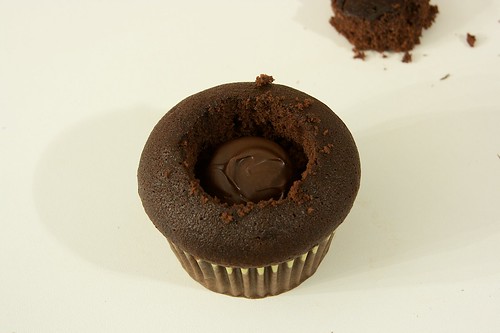It is easy to make impressive and yummy homemade chocolates for house and friends at Easter or anytime. You can purchase Easter chocolate molds at most specialty or reduction market and a wide variety of chocolate at your local supermarket. With a bit of time and patience you will soon be turning out gorgeous homemade chocolates.
Types of Chocolate
Dark chocolate contains cocoa liquor, cocoa butter, sugar and vanilla. It is stronger and richer than milk or white chocolate and is ordinarily the adored choice for cooking.

Milk chocolate contains the same ingredients as dark chocolate but has added milk solids. It is sweeter, creamier, softer in texture and less intense than dark chocolate.
White chocolate doesn't include cocoa solids, only cocoa butter blended with sugar, milk solids and flavourings, such as vanilla. It is rich, creamy and sweeter than milk chocolate.
Eating chocolate - dark, milk and white - can be used for cooking. Dark varieties include bitter, semi-sweet and sweet. Bitter chocolate has up to 80% cocoa liquor and butter with a minimal estimate of sugar. Sweet chocolate has a higher proportion of sugar and vanilla to cocoa butter.
Good-quality cooking chocolate can be found in the baking aisle of supermarkets. It is similar in taste to eating chocolate, but a small estimate of cocoa butter has been supplanted with vegetable fat to make it easier to melt, able to set without tempering. Economy than general eating chocolate.
Compound chocolate is sold in blocks or buttons and can be found in the baking aisle of supermarkets. The cocoa butter has been supplanted with vegetable fat or oil, making it easier to melt and to set at room climatic characteristic without tempering. It lacks the flavour and texture of other chocolates, but is exquisite for kids' cooking.
Melting Chocolate
Chocolate can be melted in some distinct ways together with on the stove, in the microwave or in the oven.
Stove Top - put chocolate in a clean, dry, heatproof bowl over a saucepan of simmering water. Make sure no water or steam enters the bowl of chocolate, or it the chocolate could seize. Stir enduringly over medium to low heat until the chocolate has melted.
Microwave - put chocolate in a clean, dry, microwave-safe bowl. Cook for 1 slight on medium/high then stir. Cook for other 30 seconds then stir again, continue until chocolate has all melted.
Stove - preheat oven to 160 C. Put chocolate in a clean, dry, heatproof bowl. Turn oven off then place the bowl in the oven for 10 minutes minutes. Remove and stir, then place back in oven if required for some minutes, Remove and stir again.
Tips for Melting Chocolate
* Break chocolate into even sizes pieces before melting.
* Use a metal spoon to stir chocolate; wooden and plastic spoons withhold moisture that can cause the chocolate to seize.
* all the time use a metal, glass or ceramic bowl to melt chocolate.
Making Homemade Chocolates
1. Melt your chocolate, (see above), then stir completely to Remove all lumps.
2. Pour melted chocolate into the moulds until they are filled to the top.
3. Tap the moulds with your fingertips to Remove air bubbles from chocolate.
4. Let chocolates set, until hard.
5. After your chocolates have completely set and hardened, thought about pop them out of the mold.
6. Use a butter knife to trim off any excess chocolate nearby the edges.
Tips for using Chocolate Moulds
* Never wash your chocolate molds with soapy water. The soapy water will Remove the shine of the mold, making it difficult to get the chocolate off. Just wash in hot water.
* all the time dry your molds thought about after washing. Water spots can also cause spots where the chocolate won't release unmistakably from the mould.
* If your molds are sticking, very lightly coat them with a thin layer of vegetable oil.
* If you make a mistake, or if extra chocolate dribbles in the wrong places - don't touch it while it's still wet. Place the chocolates in the fridge or freezer to harden, then you can unmistakably just pick off the parts you don't want there.
How to Store Chocolate
Chocolate should be wrapped in alfoil and placed in an airtight container. Store in a cool dry place away from direct sunlight. Do not store in the refrigerator.
Unopened chocolate has a shelf life of 12 months and opened chocolate, properly wrapped and stored has a shelf life of 3 months. (However it would never last this long at my house!)
Chocolate Terms
Seize - Chocolate will seize up when small amounts of liquid mix with it, it becomes a thick grainy mass that cannot be remelted or used.
Chocolate Bloom - White spots that appear on chocolate, caused by the chocolate being heated and cooled too quickly. This can also occur when chocolate is refrigerated, it does not affect the capability and can still be eaten.
Tempering - A technique used to stabilize chocolate with a high cocoa butter content through a melting and cooling process so the chocolate will set firm and shiny at room temperature.
Homemade Chocolate




